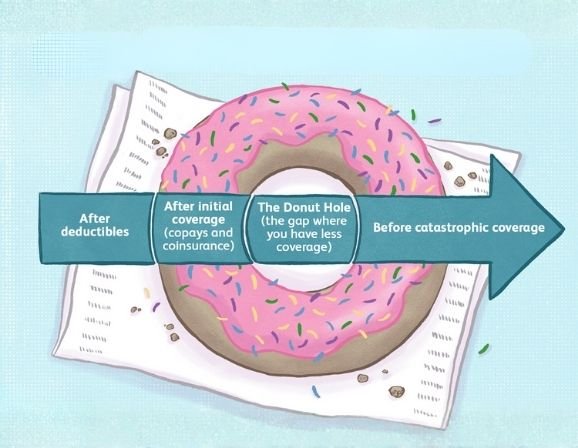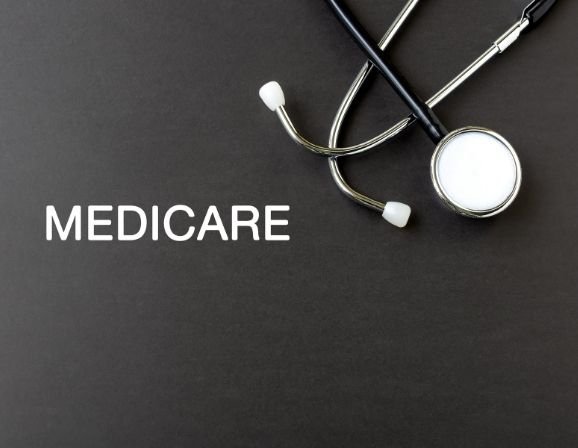Health insurance is expensive. The Affordable Care Act (ACA) made it cheaper for millions of Americans. But savings come in two main forms: premium tax credits (PTCs) and cost-sharing reductions (CSRs).
They sound similar, and people often confuse them. But they are not the same. One lowers your monthly premium. The other lowers your out-of-pocket costs when you see a doctor or pick up medicine.
If you’re enrolling through the ACA Marketplace, knowing the difference is crucial. Picking the wrong plan can leave you with surprise bills. Let’s break down premium tax credits vs cost-sharing reductions step by step.
What Are Premium Tax Credits?

Premium tax credits are based on your estimated yearly income. At tax time, you file a tax return ACA subsidies form to compare your estimate with your actual income. If you earned less than expected, you may get more credit back. If you earn more, you may need to repay part of the subsidy. This process is called “reconciliation,” and it ensures you only receive the credit you’re eligible for.
How Premium Tax Credits Work
Here’s the process:
- You apply to the ACA Marketplace.
- The system checks your household income and family size.
- If you qualify, the credit is sent directly to your insurance company.
- You pay the reduced premium each month.
Example: Your Silver plan costs $600. If your credit is $400, you only pay $200. The insurance company still gets $600, but $400 comes from the government.
This is why premium tax credits are often called advance premium tax credits (APTCs). The “advance” part means the government pays right away, not after you file taxes.
Who Qualifies for Premium Tax Credits
- Income must be between 100% and 400% of the Federal Poverty Level (FPL).
- For 2025, you may qualify even above 400% if premiums cost more than 8.5% of income.
- You cannot get premium credits if you have access to “affordable” job-based insurance.
- You must buy coverage through the ACA Marketplace.
Premium tax credits are available in all states, though the exact savings depend on where you live, your age, and the cost of benchmark Silver plans in your area.
| Save More on Monthly Premiums with 2025 Tax Credits Prime Life Financial helps calculate your subsidy and reduce your monthly health costs today. Save Now |
What Are Cost-Sharing Reductions?
Cost-sharing reductions, or CSRs, work differently. They don’t change your monthly bill. Instead, they reduce what you pay when you use care.
How Cost-Sharing Reductions Work
With a CSR Silver plan:
- Deductibles are lower.
- Copays are cheaper.
- Coinsurance percentages shrink.
Example: Without CSRs, you might pay $40 for a doctor visit. With CSRs, it could be $10. A deductible of $3,000 could drop to $700.
The insurance company doesn’t “waive” the cost. Instead, the federal government reimburses insurers to make these reductions possible.
Who Qualifies for CSRs
- Income must be between 100% and 250% FPL.
- You must select a Silver-level plan on the Marketplace.
- Bronze, Gold, and Platinum plans do not carry CSRs.
CSRs are especially valuable for people who use medical care regularly. They provide real savings on services, not just monthly bills.
Premium Tax Credits vs Cost-Sharing Reductions
The two programs serve different purposes. Both are forms of ACA savings, but they target different parts of the cost.
Key Differences
- Premium tax credits: Lower monthly premiums.
- Cost-sharing reductions: Lower deductibles, copays, and coinsurance.
- Eligibility: Premium credits go up to 400%+ FPL. CSRs stop at 250% FPL.
- Plan type: Premium credits apply to all Marketplace tiers. CSRs apply only to Silver.
Example: A family of three with income at 180% FPL can qualify for both. Their premium tax credit may drop the monthly bill from $700 to $200. At the same time, their CSR Silver plan may cut a $2,500 deductible down to $600.
This shows how the two programs stack. One cuts the monthly burden, the other makes care affordable when you actually use the plan.
ACA Subsidies Comparison
The term ACA subsidies comparison means weighing which program matters more for your situation.
When Premium Credits Help Most
- You want the lowest monthly bill.
- You don’t expect to use medical care often.
- You prefer predictable savings.
When CSRs Help Most
- You have frequent doctor visits.
- You take prescription drugs.
- You have a chronic condition that leads to regular care.
For many households, the real answer is “both.” If you qualify for both premium credits and CSRs, the best value often comes from enrolling in a Silver CSR plan.
Real-Life Scenario: Comparing the Two
Consider two people with similar incomes but different health needs.
Case 1: Premium Credits Only
Alex is 32 and healthy. He earns $35,000, which is about 250% FPL. He qualifies for a premium tax credit of $300 per month. He chooses a Bronze plan with a low monthly bill. Since he rarely visits the doctor, the higher deductible doesn’t bother him.
Case 2: Premium Credits + CSRs
Maria is 40 with diabetes. She earns $38,000, also about 250% FPL. She qualifies for the same premium tax credit but also for CSRs. She picks a Silver CSR plan. Her deductible drops from $3,500 to $750. Her prescription copays shrink, too.
For Alex, premium credits are enough. For Maria, CSRs make a real difference. This is the heart of premium tax credits vs cost-sharing reductions: knowing which one matches your needs.
Health Insurance Savings Programs

The ACA’s design was simple: no American should skip care because of cost. To achieve this, lawmakers built two health insurance savings programs: premium tax credits (PTCs) and cost-sharing reductions (CSRs).
These programs work differently, but they often overlap. Many households qualify for both.
How They Work Together
Imagine a family of four earning $45,000 in 2025. That’s about 145% of the Federal Poverty Level.
- They qualify for a premium tax credit worth $800 per month.
- They also qualify for CSRs that cut their deductible from $3,000 to $500.
Without subsidies, the family would spend more than 20% of their income on insurance. With subsidies, that burden drops to under 7%.
This is how the two savings programs, when combined, change affordability.
ACA Marketplace Savings
The ACA Marketplace is the only way to access these subsidies. Plans bought outside the Marketplace directly from insurers or brokers don’t qualify for federal help.
Why Marketplace Plans Are Different
- All Marketplace plans cover essential health benefits.
- Subsidies are applied directly, so you don’t wait for refunds.
- Plans are tiered (Bronze, Silver, Gold, Platinum) with clear rules.
Which Tier Works with Which Subsidy
- Bronze: Premium credits apply, but no CSRs.
- Silver: Both premium credits and CSRs can apply.
- Gold/Platinum: Premium credits apply, but no CSRs.
This is why many experts call Silver plans the “sweet spot.” They can combine both programs for maximum value.
| Unlock Marketplace Savings Before Enrollment Ends Prime Life Financial ensures you get the right tier for both premium credits and CSR help. Enroll Now |
Eligibility for Premium Tax Credits and CSRs
Not every household qualifies. Income, family size, and access to job-based coverage all play roles.
Eligibility for Premium Tax Credits
- Income between 100% and 400% FPL.
- In 2025, help may extend above 400% if premiums exceed 8.5% of income.
- Must buy through the Marketplace.
- Cannot have “affordable” job-based insurance.
Eligibility for Cost-Sharing Reductions
- Income between 100% and 250% FPL.
- Must pick a Silver CSR plan.
- Not available for Bronze, Gold, or Platinum.
State Differences
- In Medicaid expansion states, adults under 138% FPL qualify for Medicaid, not Marketplace subsidies.
- In non-expansion states, people below 100% FPL may fall into a coverage gap — earning too little for PTCs but too much for Medicaid under old rules.
Why the Difference Matters
Confusing premium credits with CSRs can cost you money. Many people choose Bronze plans for lower premiums without realizing they qualify for Silver CSR plans that could save them thousands in out-of-pocket costs.
Premium Credits Focus on Predictability
They help with monthly budgeting. Families know exactly what they’ll owe each month.
CSRs Focus on Care Use
They help when you need services. Lower deductibles mean you don’t avoid the doctor out of fear of big bills.
Example: A young, healthy single person may do fine with just premium credits on a Bronze plan. But a family with kids who need regular care could lose out by skipping Silver CSR options.
Final Thoughts
The ACA provides two powerful subsidy tools. Premium tax credits reduce your monthly bill. Cost-sharing reductions reduce what you pay when you use health services. Together, they make health insurance realistic for millions who would otherwise go uninsured.
For many, the best choice is a Silver CSR plan that combines both subsidies. But the right choice depends on your income, family size, and health needs.
With enrollment dates approaching, households should review their eligibility, compare options, and calculate savings. Prime Life Financial guides clients through this process, ensuring applications are correct and subsidies are maximized.
FAQs
What are premium tax credits and cost-sharing reductions?
Premium tax credits lower monthly premiums. Cost-sharing reductions lower deductibles, copays, and coinsurance.
What is the difference between a premium and a cost share?
A premium is the fixed monthly cost of having insurance. A cost share is what you pay when you actually use health services, like a copay or deductible.
Are cost-sharing reductions worth it?
Yes. For households between 100% and 250% FPL, CSRs can save thousands per year by lowering deductibles and other out-of-pocket costs.
Why am I not eligible for cost-sharing reductions?
You may be over 250% FPL, you may have chosen a non-Silver plan, or you may not have applied through the Marketplace.
References
Kffcarenec. (2025d, August 9). Explaining health care reform: Questions about health insurance subsidies. KFF. https://www.kff.org/private-insurance/explaining-health-care-reform-questions-about-health-insurance-subsidies/






